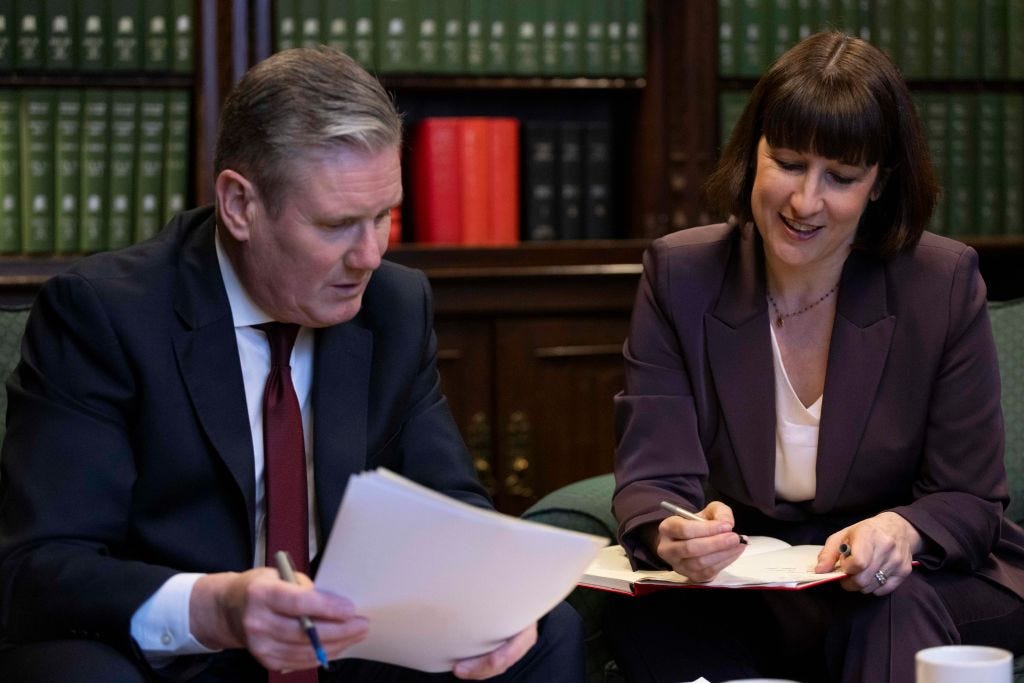Mind the Gap
The true scale of Labour’s fiscal challenge
Before the political class went off on holiday, Rachel Reeves delivered a financial statement to Parliament intended to meet two, contradictory, objectives.
On one hand she wanted to highlight the scale of Tory economic mismanagement and pitch roll for what will be a very difficult budget on the 30th October. That meant making things seem as bad as possible.
On the other she needed to make fixing the problem seem achievable without large tax increases, which had been ruled out during the election, or else another round of Osborne-style austerity.
She needed a goldilocks number: the “hole” in the finances needed to be big enough to justify “difficult decisions” but small enough not to require *very* difficult decisions.
The Treasury managed this by focusing on the gap in this financial year between what the Conservatives had budgeted for and what is actually going to be spent. Her officials came up with a perfectly sized £22bn “hole”. Enough to sound bad and irresponsible, not enough to sound unmanageable.
The figure itself is plausible, though £8.6bn is accounted for by unspecified “normal reserve claims” without any detail. The Tories have complained that a further £9.4bn comes from this year’s public sector pay awards and it was Labour, not them, who decided to honour these in full. But in reality Rishi Sunak would have had little option but to do the same (as he did last year) given the enormous pressures on recruitment and the risk of further industrial action.
The real issue is not that the number is wrong but that it doesn’t tell us very much. What matters is the difference between what spending needs to be in future years and projected revenue. This gap is an awful lot larger than £22 billion.
In order to estimate the size of this “real” gap we need to look at two things:
The “headroom” Reeves will have against her fiscal rules when the OBR do their next forecast (alongside the budget).
The difference between the spending plans set by the last government and what really needs to be spent.
Once we’ve established a likely range we can then look at the options Reeves might have to close the gap and make her numbers add up. As regular readers will know I think our approach to fiscal rules is daft and creates all sorts of mad incentives, but as it’s the system with which Reeves has chosen to work I will too (while demonstrating some of the silliness along the way).
Keep reading with a 7-day free trial
Subscribe to Comment is Freed to keep reading this post and get 7 days of free access to the full post archives.


